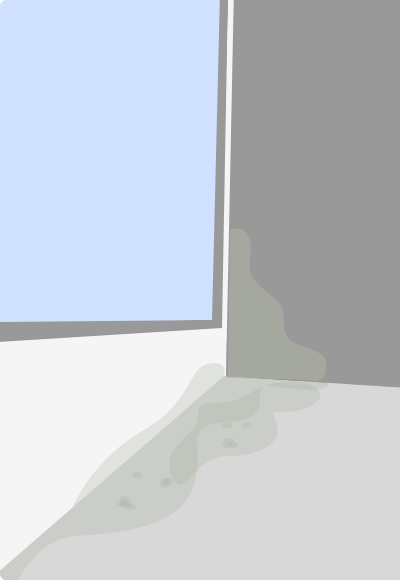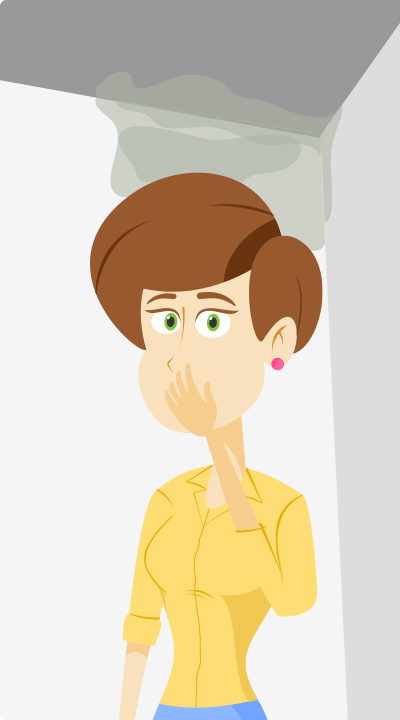
Water
Flooded basements, leaking pipes, and consistently moist areas are all places mold loves to grow. If you see any signs of water leakage or puddles in your home, you should have your home inspected for mold.
At its core, mold is a fungus. There are more than 100,000 species of molds (1) that grow on this planet. They break down organic matter and materials that are found in nature like wood and dead plants. For mold to grow, it needs moisture and a source of food. According to the EPA (2), there are ten things everyone should know about mold:
While not all molds are easily found or obvious, there are a few key things (3) to watch out for to tell if you need your home professionally inspected for mold and then have it removed:

Flooded basements, leaking pipes, and consistently moist areas are all places mold loves to grow. If you see any signs of water leakage or puddles in your home, you should have your home inspected for mold.

While it's nearly impossible to tell what type of mold is growing based on shape, color, or size, if you see mold anywhere, you need to get it removed. All molds have the potential to affect your health.

If your home consistently smells musty or earthy, similar to rotting leaves, there's a good chance mold is growing. You can usually follow your nose to where the smell is the strongest and find the mold that way. However, it could be growing in the walls or in another hidden area, so you may not always see it.

There are key symptoms to take note of that go hand-in-hand with a mold allergy. These can include watery eyes, a runny nose, sneezing, headaches, dizziness, and even memory loss. While you may think you're coming down with a cold, if you only experience these symptoms in your home, there's a chance that mold is the reason. Prolonged exposure to any type of mold can be hazardous to your health, so be sure to get any molds removed as soon as possible.
Mold can be found anywhere that has moisture, a food source such as cellulose, wood, and oxygen. The most common places for mold to grow in a home are basements and bathrooms. However, these aren't the only places in a home that mold can grow in.
Back to topAccording to the CDC (4), mold can cause adverse health effects in some while others may not experience any symptoms at all. There are some people who are more sensitive to molds than others. For those who are sensitive, molds can cause coughing or wheezing, runny noses, watery eyes, scratchy throats, or even skin irritations. There are also people who have severe mold allergies who experience more severe reactions to mold. If you have found any mold in your home, it's best to get it removed as soon as possible and take the necessary precautions to keep it from coming back.
Back to topIf you think you might have mold growing in your home, you should hire a certified mold inspector to find it. If the inspector does find mold, it's not always necessary to have it tested to see what kind of mold it is since the testing is expensive (5) and the mold will need to be removed no matter what. The average cost for a mold inspection of a typical family home runs about $200-$600, though larger homes may cost up to $900 or more. The price can increase if the inspector has to cut out sections of walls to find the mold.
Back to topWhen you or an inspector finds mold growing in your home, it needs to be removed as soon as possible. If you find a small patch of mold on a hard surface that's no more than 10 square feet, you should be able to remove it yourself by scrubbing it with water and detergent. However, be sure to wear gloves and a respirator or mask and close all vents, doors, and windows. Mold reproduces through microscopic spores that travel through the air and even when the mold is cleaned, it can still leave these spores in the air. If you have a professional come in for mold remediation, they should wear respirators and gloves as well as protective clothing. They should also cover the entire area in plastic sheeting and close or cover all the vents and doors and other openings.
It costs anywhere from $500-$4,000 to remove mold from a crawlspace and $2,000-$6,000 to remove mold from walls, ducts, crawl spaces, and the attic of a home. If the mold has been allowed to grow and thrive and has caused structural damage, the cost increases drastically to $10,000-$30,000 or more. It's best to get mold removed as soon as possible to keep the cost down and to keep your house structurally secure and you and your family healthy.
Back to top
Enter service and
zip code to view
cost breakdown